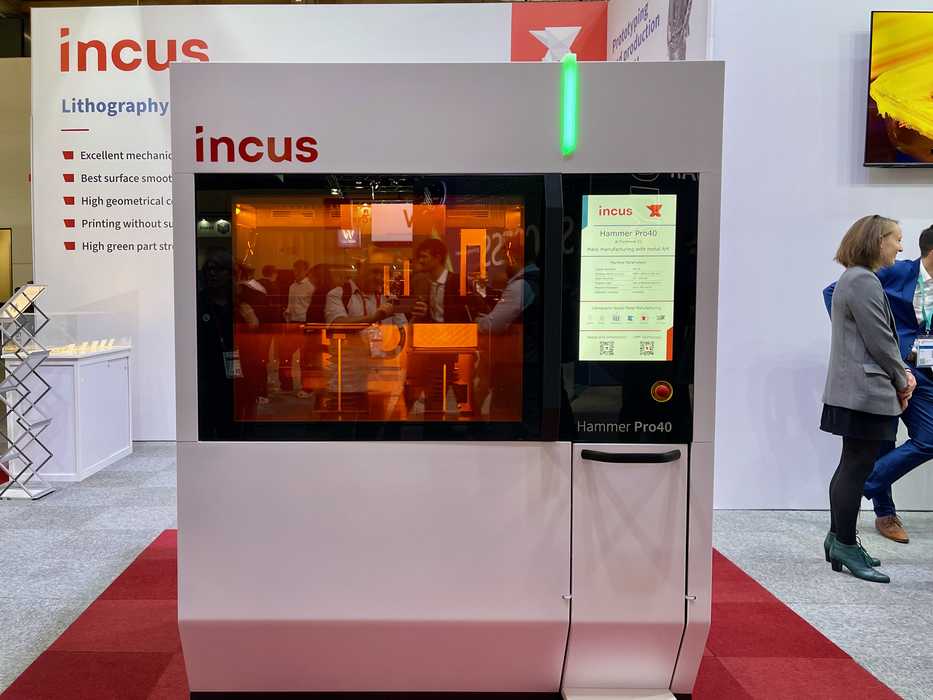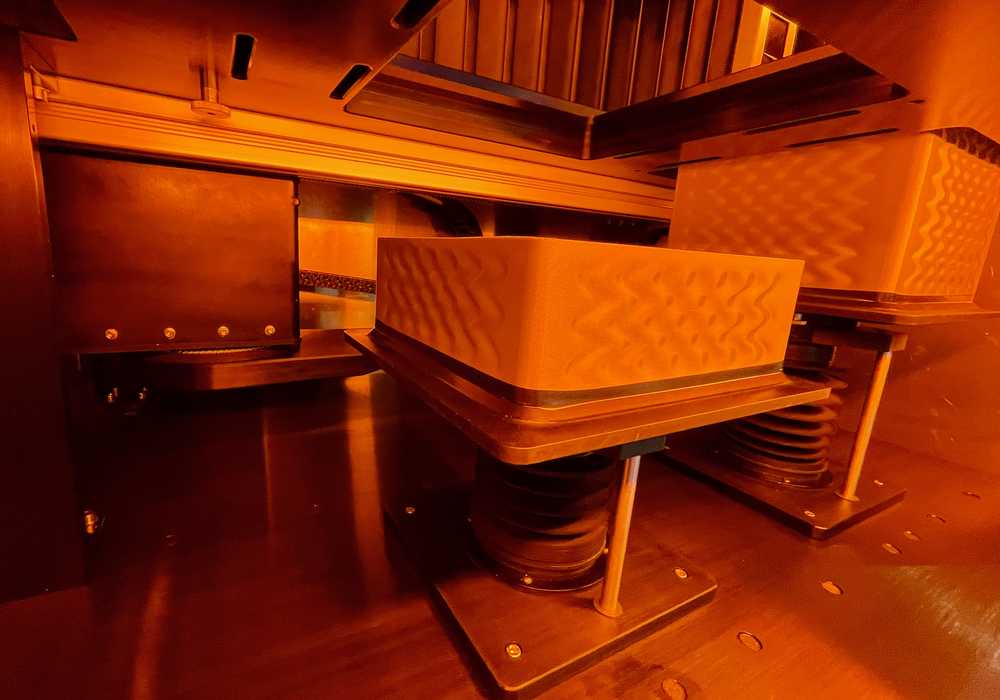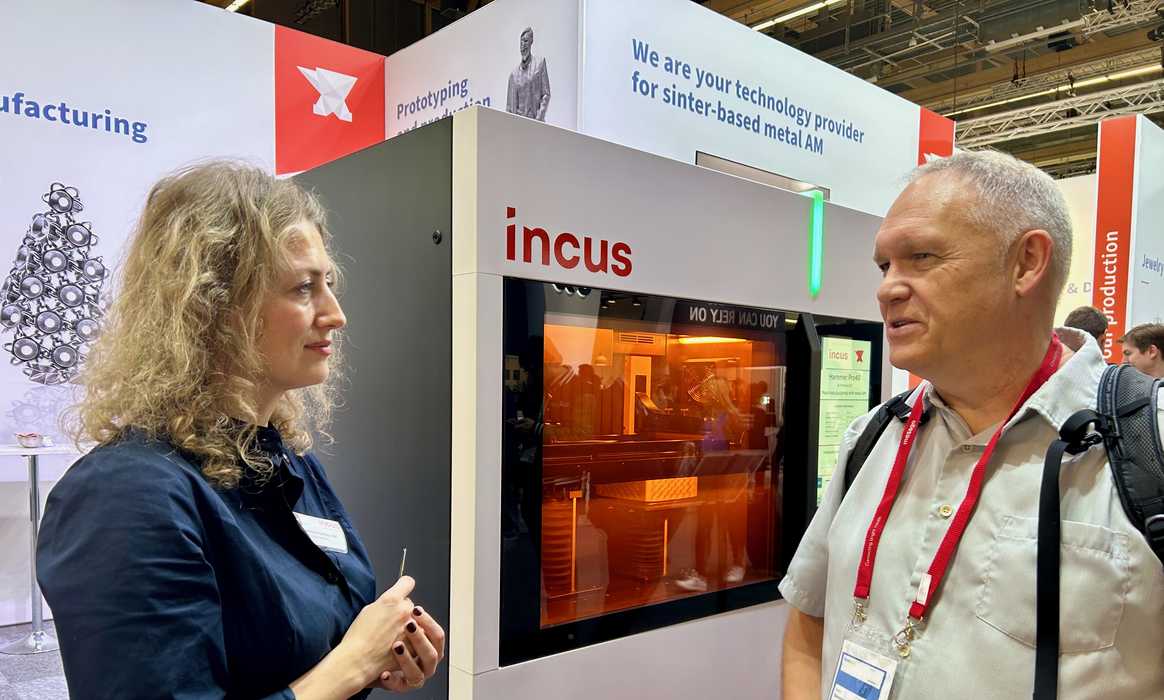
We had a close look at Incus’ new metal 3D printer, the Hammer Pro40.
The process used by Incus to produce metal objects is quite different from most metal 3D printers, which tend to use LPBF or binder jet approaches. Instead, Incus uses something they call “Lithography-based Metal Manufacturing”, or LMM.
They developed the process only in 2019, and shipped their first machine, the smaller Hammer Lab35 unit, in 2020. Now they’ve expanded their product line with a production-level device, the Hammer Pro40.
The LMMprocess involves use of a photopolymer resin that’s been infused with metal particles. The interesting aspect is that the resin is solid until heated. This is done by a blade that’s heated. The blade sweeps across the material block and scoops up liquid resin. This is then precisely laid down as a layer on the build plate.

Then a DLP engine lights up the entire build area, selectively fusing portions of the layer that will become the part. The non-cured portions of the layer cool and become solid once again. This provides support for overhangs in a very unique fashion.
This requires a “de-caking” step, in which the resulting block is heated, melting away the uncured material. This is collected, and can be reused in subsequent prints. There doesn’t seem to be material wastage, as happens frequently in LBPF systems.
Finally, the green part undergoes a debinding and sintering process to finalize the metal part. The part does shrink slightly as a result of this process, but that shrinkage is taken into account when sizing the 3D model.
The Hammer Pro40 is a much larger device that is able to generate seven times the throughput of the smaller Hammer Lab35 3D printer. The system can apparently print up to 700cc’s of material per hour, or by my calculations about 170mm^3 per second. That’s about 10X the volumetric capacity of most high speed desktop 3D printers.

How is that accomplished? Apparently the print speed is slightly faster, but the build volume is larger at 200 x 154 x 150 mm. There are two DLP projectors in the unit which handle six different block areas to cover the entire build surface.
The system also includes some automation features, most notably automatic material reloading to allow for continuous 3D printing. However, the operator will have to swap in new material while printing continues. Fortunately, this is easily done with a special arm.
When you look at the Hammer Pro40 system in total, there are a number of very intriguing advantages over other metal systems:
No powder involved, making the work are clean and safe
No support structures required means reduced post processing work
Complete reuse of material should lower material costs
Non-stop 3D printing
To me, these all sound like the characteristics of a good production machine, and I’m sure that’s the target Incus has focused upon.
Via Incus
